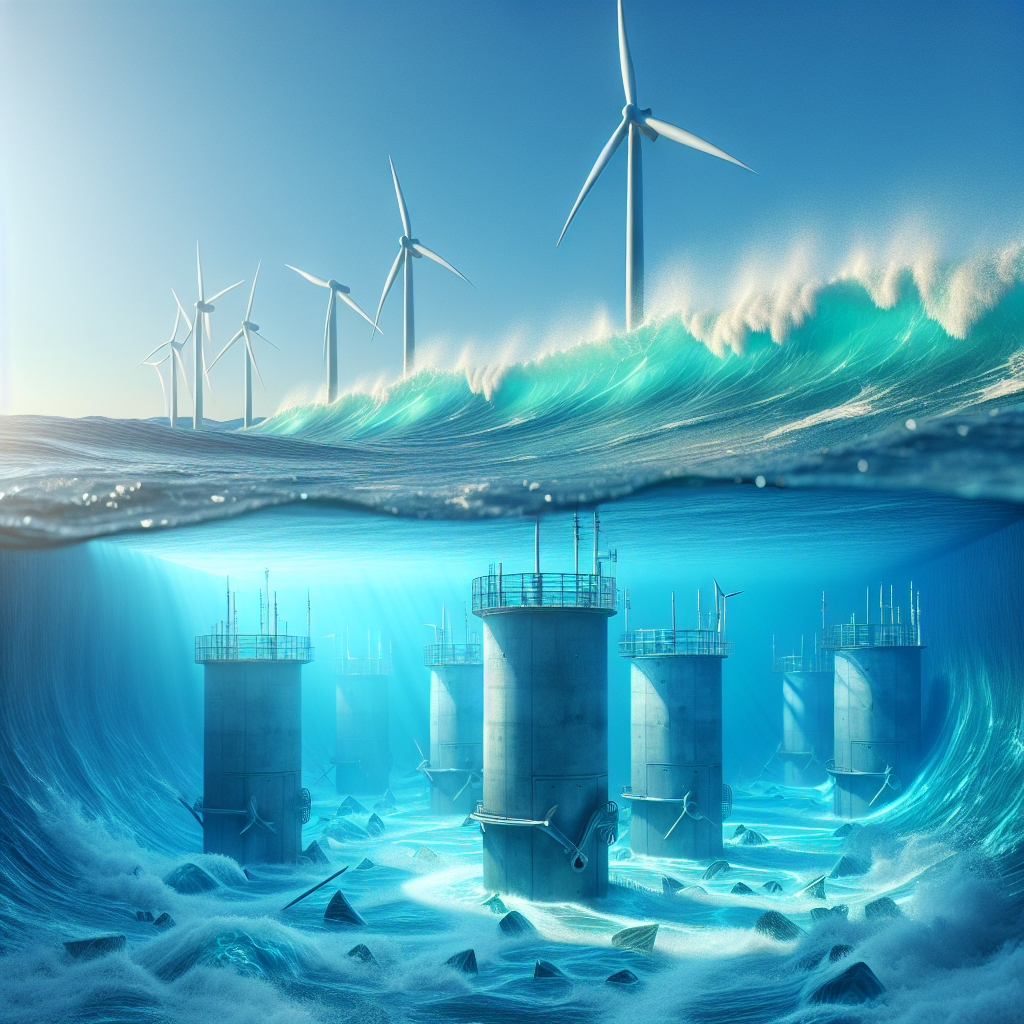Tidal Power: Harnessing the Ocean’s Energy
Tidal power, a form of hydropower, leverages the energy obtained from the rise and fall of sea levels, or tide flows, to generate electricity. This renewable energy source is both predictable and environmentally friendly, offering a sustainable alternative to fossil fuels. As the global community seeks to mitigate climate change impacts by reducing carbon emissions, tidal power presents a compelling solution for meeting the world’s ever-growing energy needs.
The Mechanics of Tidal Energy
The operation of tidal energy generation hinges on the gravitational pull exerted by the moon and, to a lesser extent, the sun. This gravitational force causes periodic changes in sea levels, known as tides. There are two primary methods for harnessing tidal energy: tidal stream systems and tidal range technologies.
Tidal Stream Systems utilize the kinetic energy of moving water, much like wind turbines harness air movement. These underwater turbines are placed in locations with high tidal current velocities, such as in narrow straits, fjords, and inlets, where they can capture the energy from fast-moving water.
Tidal Range Technologies, on the other hand, depend on the potential energy difference between high and low tides. Tidal barrages are the most common form of tidal range technology. They are essentially dams built across the entrance of a tidal basin. The barrage contains turbines, which are activated as the basin fills and empties during the tide cycle.
Advantages of Tidal Power
Predictability: Unlike solar and wind energy, tidal currents can be accurately predicted years in advance, ensuring a consistent and reliable energy supply.
Environmentally Friendly: Tidal energy is a green power source. It produces no greenhouse gases or other pollutants, making it a clean way to generate electricity.
High Energy Density: Water is over 800 times denser than air, which means tidal energy can generate significant amounts of electricity even at low speeds.
Longevity and Durability: Tidal energy systems are designed to be robust and long-lasting, with many having lifespans of over 100 years.
Challenges and Considerations
Despite its potential, tidal power faces several challenges. The initial installation and maintenance costs of tidal power plants can be high, partly due to the harsh operating environments. Also, tidal energy projects can have ecological impacts, including changes to sediment transport and potential effects on marine life due to turbine blades or changes in water quality.
Future Prospects
Innovation and technological advancements are making tidal energy more viable and cost-effective. For example, new turbine designs that reduce environmental impact and installation costs are under development. Additionally, international collaboration on research and tidal project development is increasing, highlighting the growing recognition of tidal power’s potential in the global energy mix.
Tidal Power Around the World
Several countries are leading the way in tidal power development. The United Kingdom, for instance, is home to some of the world’s most ambitious tidal projects, given its favorable geographic location. Canada, France, South Korea, and Australia are also exploring and investing in tidal energy, recognizing its potential to provide a significant portion of their renewable energy needs.
FAQs About Tidal Power
Q: How does tidal power generate electricity?
A: Tidal power generates electricity by converting the kinetic energy of tidal currents or the potential energy difference between high and low tides into mechanical power, which is then converted into electrical power through generators.
Q: Is tidal energy renewable?
A: Yes, tidal energy is a renewable energy source. It relies on the gravitational forces of the Earth, moon, and sun, which are inexhaustible in human terms.
Q: Can tidal power replace fossil fuels?
A: While tidal power has significant potential, it is unlikely to completely replace fossil fuels on its own due to geographical and technical limitations. However, as part of a diverse mix of renewable energy sources, it can significantly contribute to reducing reliance on fossil fuels.
Q: What are the environmental impacts of tidal power?
A: The environmental impacts of tidal power are generally considered low compared to fossil fuels. Potential impacts include effects on marine life and habitats due to the construction and operation of tidal power plants. However, with careful site selection, design, and management, these impacts can be minimized.
Q: How much of the world’s energy can tidal power supply?
A: The potential contribution of tidal power to the world’s energy supply is difficult to quantify precisely due to technological, economical, and geographical constraints. However, in specific regions with favorable conditions, tidal power can supply a significant portion of local energy needs.
Q: Is tidal energy expensive?
A: The initial setup costs for tidal energy systems are relatively high, but operational and maintenance costs are low. As technology advances and economies of scale improve, the cost of tidal energy is expected to decrease, making it more competitive with other forms of energy.
Conclusion
Tidal power stands out as a promising, sustainable energy source that can play a crucial role in the global transition to renewable energy. With its predictability, environmental benefits, and significant potential for technological innovation, tidal energy represents a powerful tool in the fight against climate change. As the world continues to explore and invest in renewable energy sources, tidal power is poised to become an increasingly important part of the energy mix, offering a clean, reliable, and abundant source of electricity for future generations.

